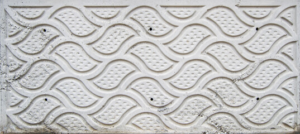Masonry is an engaging construction option that can elevate the look of any property. The key to a successful masonry project is proper planning.
For example, you should understand the difference between mortar and grout. Mortar is a stiffer, more plastic formulation used as a sort of glue, and grout is a finer, more fluid product that’s intended to fill gaps in assembled structures. For more information, click the Website to proceed.

Masonry is a great way to add beauty and grandeur to your home or business. It is also a durable material that can withstand the test of time. In addition, masonry is very cost-effective and can be used in a variety of projects.
Brick and stone masonry are aesthetically pleasing and can increase the curb appeal of your property. These materials can be used in a number of ways, including driveways, patios, walkways, and even garden walls. In addition, they are ideal for retaining walls and can help keep soil from eroding.
Another benefit of masonry is that it is fire-resistant and has excellent thermal properties. This means that it will help to regulate the temperature inside a building and reduce energy costs. It is also durable and resistant to pests and extreme weather conditions.
In addition to reducing energy costs, masonry also improves indoor air quality. Its natural soundproofing qualities prevent unwanted noise from disturbing occupants, and it can create a more serene and peaceful atmosphere. This is especially important in offices, schools, and other commercial spaces.
Masonry can be used in a variety of projects, from driveways and garden paths to pool decks and custom water features. It can also be used to create unique landscaping features, such as walls and sculptures. These structures can complement your existing landscape and make a statement about your personal style.
If you’re considering a masonry project, it’s important to work with a professional. They can advise you on the best material to use and how to ensure that your project is done properly. Moreover, a professional will be able to help you choose the best design and layout for your space.
The masonry industry is booming, and many people are discovering the benefits of this construction method. Masonry offers several benefits that other construction methods cannot, including durability, aesthetics, and affordability. It is important to consider these factors when choosing a contractor for your next project. By doing so, you can be sure that your project will turn out successfully and look beautiful.
Masonry construction has a long-standing reputation for being durable and stable. It’s also more affordable than other building materials. However, it’s important to remember that prices can vary depending on the complexity of the project. Having a clear blueprint of your project will help masons provide accurate estimates and prevent any surprises during the construction process. Additionally, some types of stone are more expensive than others.
The cost of masonry is determined by the type and quality of material used as well as the level of skill required to construct it. A professional mason will ensure that the design of your project is solid and will offer the best value for your money.
A professional masonry company will have the experience and expertise to complete the job within the stipulated time frame. They will assess the structure to identify any weak points and take appropriate measures to rectify them. Masonry structures are designed to withstand heavy loads, and they are usually built with reinforced concrete. They can withstand storms and hurricanes and are resistant to rotting, pests and other natural disasters.
Brick and concrete block are the most common masonry materials in industrialized nations. These can be either load-bearing or non-load-bearing and can offer a variety of structural possibilities for your building projects. Concrete with steel rebar offers greater tensile and lateral strength than concrete that is unreinforced.
In addition to its affordability, masonry construction is also environmentally friendly. Bricks and stones are naturally occurring materials that are easily accessible in many regions, which reduces transportation costs and environmental impact. Masonry structures also provide superior insulation and energy efficiency compared to other construction methods.
Another benefit of masonry is its ability to foster a sense of community among members. It allows men to associate with other men who believe in values such as honesty, charity, compassion, love and trust. It is a fraternal organization that encourages personal growth and provides moral guidance through a series of rituals, symbols and lessons. These symbols include the square and compasses, the trowel, the rough and smooth ashlars, and more.
Masonry is an affordable construction method, and it’s a great choice for those who want to build a space that will last. When compared to wood framing, masonry is more cost-effective, and it yields a much safer and more sturdy structure that’s cheaper to insure and operate. Additionally, masonry is durable and energy efficient, so it will help to lower building costs over time.
During the Industrial Revolution, brick manufacturing shifted from hand molding to mechanized production, which made masonry more accessible for builders and homeowners. And today, advances in materials science have further lowered production costs and expanded the possibilities for architects and engineers. These innovations have made masonry even more versatile, beautiful, and affordable than ever before.
Masonry has a long lifecycle and requires very little maintenance. This longevity reduces the need for frequent rebuilds and renovations, which saves money on raw materials and labor costs. Additionally, masonry is resistant to termites and other pests, which can cause costly repairs to wooden buildings.
In addition, masonry’s ability to effectively soundproof rooms protects inhabitants from external noise pollution. This can lead to better sleep and productivity, increasing the overall quality of life. And because masonry buildings are so aesthetically pleasing and long-lasting, they often increase in value over time.
Brick, stone, and concrete blocks are readily available in many parts of the world. Their local sourcing helps reduce transportation-related carbon emissions and supports sustainable construction practices. Furthermore, the thermal mass of masonry walls helps regulate indoor temperatures, further reducing energy consumption and costs.
A professional masonry contractor can provide the guidance and expertise needed to develop and complete a successful project. In addition to providing the necessary construction knowledge and skills, they can ensure the correct construction procedures are followed and assist with the selection of proper materials and finishes for the project. By using a reputable contractor, you can expect an efficient and cost-effective masonry project that will add beauty and value to your home or business. Contact us today to get started on your project. We look forward to working with you.
Masonry is an attractive construction material that adds a sophisticated touch to any property. It is resistant to rotting, pests, and mold, and offers an elegant aesthetic for any home or building. It’s also water-resistant, meaning it will hold up against heavy storms and extreme heat and cold. This durability is a plus because it can increase the value of a home and reduce maintenance costs.
Brick masonry is visually appealing and can be used to build walkways, walls, or even retaining walls. It can also be used to create patios, outdoor kitchens, or fireplaces. In addition to being attractive, it can also help to keep soil from eroding and prevent flooding. Masonry is also fire-resistant, which makes it a safer choice for your home in the event of a disaster.
If you’re planning a new project on your property, a masonry contractor can help with design and construction. They can help you choose the right materials for your specific situation and needs, ensuring that the final product is high-quality and durable. They can also help you with the permitting process, making sure that your project is compliant with all local regulations.
Masonry is a sustainable construction method because it uses natural materials that don’t require chemical treatments. Its durability and resistance to extreme weather conditions also contribute to energy efficiency, reducing heating and cooling costs.
Many people enjoy preserving a piece of their home’s history when remodeling or renovating, and masonry can be an ideal option for this. For example, a homeowner can use their original stone and brick walls in a living space, then frame them for modernization, creating a unique and beautiful look. Another way to incorporate masonry is to use it as flooring. Adding rustic original floor brickwork gives an area character and charm, while also saving money on maintenance and insurance costs.





